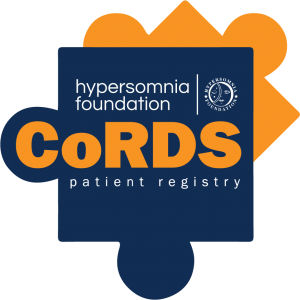SomnusNooze
Wouldn’t you like to do something to help solve the puzzle of hypersomnia? Well you can! Sharing information about your symptoms, your previous treatments, and your diagnostic journey as part of the Hypersomnia Registry at CoRDS (Coordination of Rare Diseases at Sanford) holds the key to solving this complicated puzzle called hypersomnia.
Anyone can gather information on the Internet through polls, questionnaires, or surveys, but, to publish their results in a medical journal, researchers can use only information that has been obtained in a very specific manner that incorporates legal informed consent and privacy regulations. Therefore, CoRDS has put many safeguards into place to ensure that researchers can use the information you provide.
The first step is called Institutional Review Board (IRB) approval. (Take a look at the side bar accompanying this article to learn more about IRBs). The IRB at Sanford Research approved not only the CoRDS registry questionnaire, but also the hypersomnia-specific questionnaire that is part of the registry. Any researchers who want to use the information in the registry also have to obtain a first approval from their own IRBs and then a second approval from the Sanford IRB.
The second step in safeguarding your information is informed consent. This means that, in the process of signing up to participate in CoRDS, you are given a chance to read information about the registry and you then sign a form that indicates you understand what you are doing. You can sign this form either electronically, if you are filling out the questionnaires on line, or with a pen, if you are completing the paper version of the registry. If you have any questions, you can call or send an email to CoRDS before you sign the consent form.
Thirdly, the information you provide is kept strictly confidential. The questionnaires that you complete will never be associated with your name—a computer generates an ID number that is assigned to your identifiable information (name, address, etc.) and to your responses to the questionnaires. Your identifiable information is then kept in one database and your questionnaire responses, tagged only with the ID number, are in a separate database (this is called de-identified data). Once researchers receive approval to look at the registry or questionnaire responses, they will be given only the de-identified data. The Hypersomnia Foundation does not have access to any of the information at any time.
Your privacy is also protected even if you indicate on your questionnaire that you are willing to be contacted to participate in additional research projects. For example, researchers might contact CoRDS and tell them that they want to send an additional questionnaire to all participants who have a specific symptom, such as long sleep time (> 11 hours/24 hours). CoRDs personnel would then contact everyone in the registry who indicated that they sleep for more than 11 hours per day and would like to participate in additional studies. CoRDS would provide these people with the researchers’ contact information, and it would be up to the individual people whether they contact the researchers to participate in the additional research.
Participating in the Hypersomnia Foundation Registry at CoRDS is a simple way for you to take part in research into the causes and treatments of hypersomnia. When we all complete the questionnaires, researchers will be able to compare our answers with those of hundreds, if not thousands, of others. The researchers will then be able to detect patterns, identify common symptoms, better define the disorders, and gain insights into what treatments work and those that don’t.
If every person with hypersomnia completed these simple questionnaires, researchers would be able to perform a crucial first step in research: to map the natural history of the disorder. Later this year, the Food and Drug Administration will be accepting applications for up to $400,000 in funding per year over the next five years to conduct natural history studies in rare diseases. To be competitive in the grant process, hypersomnia researchers will need your help. They will need a large database of information on patients with idiopathic hypersomnia, KLS, and narcolepsy, all of which are rare diseases. This is the first of many reasons why your participation in the Hypersomnia Foundation Registry at CoRDS is so vital.
Becoming part of the registry is easy. Won’t you take an hour of your time to help solve the puzzle of hypersomnia? Simply go to http://www.sanfordresearch.org/cords/ and click on the ENROLL NOW button to become a part of the Hypersomnia Registry at CoRDS. And feel free to download the new CoRDS/Hypersomnia Registry logo and make it your photo on Facebook.

